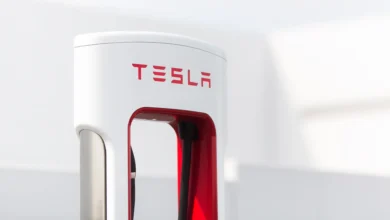
The launch of Tesla’s long-awaited electric truck Semi is having more problems than expected. Various sources point to problems with the display system.
The arrival of the Tesla Semi has marked a turning point in the company. The largest and most complex product they have developed is already in the hands of their first customers, which is their best and toughest test in real environments. The first problems have appeared as an essential part of this stage. Over the past few months, several stranded units have been detected on the highway. Immediately the first rumors pointed to failures with the electrical diagram, but as various sources involved in the development collect, another essential component is the one that is bringing headaches.
On December 2, the delivery ceremony of the first units of the Semi was celebrated in style. PepsiCo was honored to take delivery of those first electric trucks from Tesla. However, those first units have not entered full service as they are being used for testing as part of their development program. For many months, Tesla engineers have subjected it to all kinds of tests in simulated environments, but nothing better than day-to-day to discover the advantages and weaknesses of a product.
As reported by Teslarati, collecting statements from people involved in the project, the Tesla Semis that have been discovered lying on the road did not present range my or mechanical problems. Many rumors then suggested that the Semi might not be meeting the expectations generated. Barely two weeks after the first deliveries, PepsiCo contradicted the approval data provided by the company.
However, that doesn’t seem to be the main reason why Tesla Semis are getting stuck in the middle of the road. Sources report that it is the drivers themselves who stop the trucks due to the insecurity caused by the screens. The two control panels of the Tesla Semi collect all the information and all the functionalities and seem to be the focus of all the problems. Breakdowns are common, panels go out or have errors, and, faced with such uncertainty, drivers choose to stop and wait to be towed.

Without constant access to essential information such as speed, camera visibility, or range, the safest decision for drivers is to stop the truck and wait. Tow vehicles move the failed units to a facility in Lathrop, California, where they are checked, repaired, and put back into service. It is clear that the first stages are not free of setbacks and errors, but if Tesla wants to have a marketable product, it must correct the failures as soon as possible and definitively.





